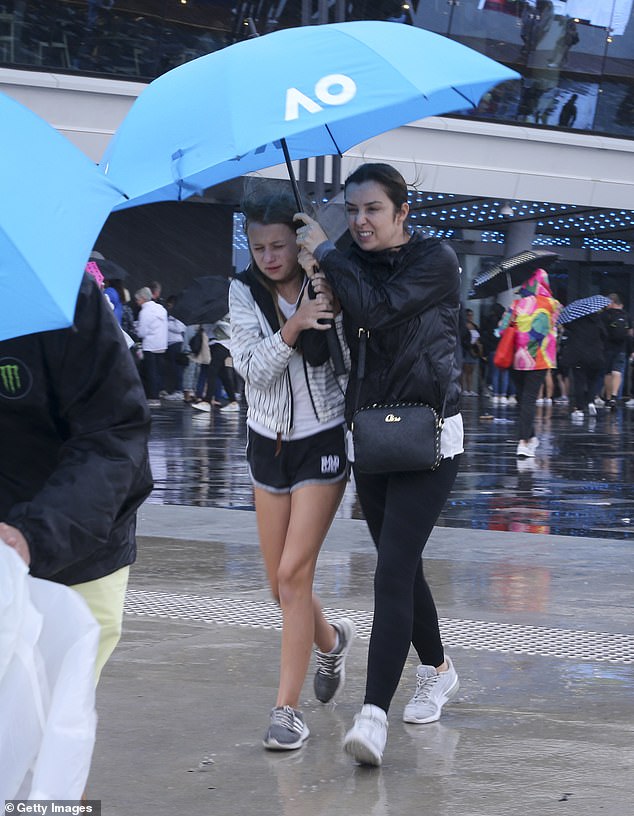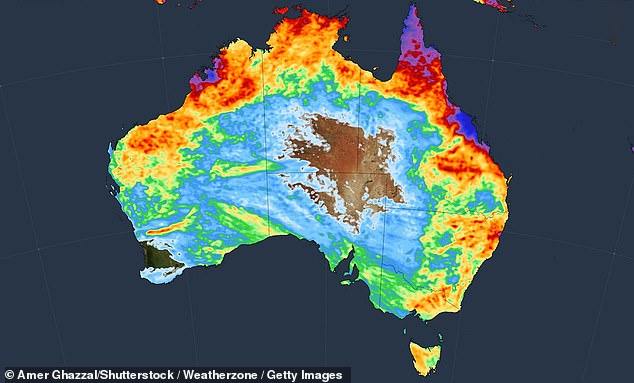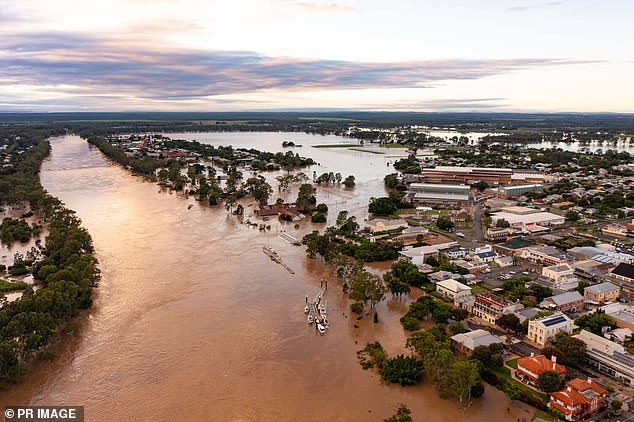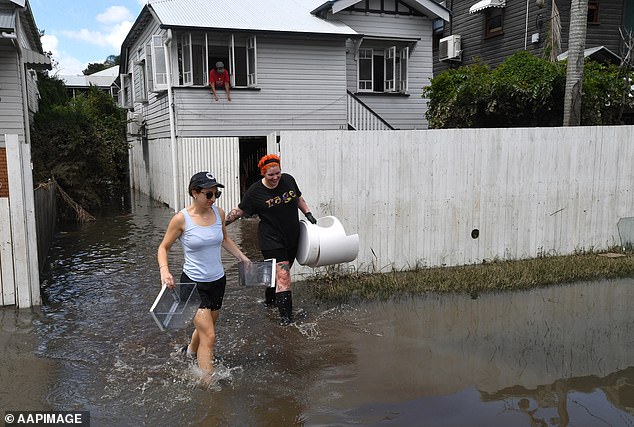The La Nina that never ends as more rain is forecast as system continues to bring wet weather
>
The Girl That Never Ends? More rain and flooding is forecast for Australia as experts say there are NO signs the wet weather pattern is coming to an end at this time.
- Weakened La Niña system halts as wet weather continues
- Forecasters predict an end in the coming months
- North and central Queensland hit by heavy rain
The La Niña weather event that has brought widespread rain to eastern Australia for the past three years will continue until 2023 as it brings more heavy downpours across the country.
Heavy rain and flooding continue to affect North and Central Queensland, with minor to major flooding ongoing.
The floods have isolated some Queensland towns with record rainfall totals in some places.
At Proserpine Airport, a 42-year-old record was broken when 678mm fell in the 72 hours to 9am Tuesday, while Finch Hatton, inland from Mackay, recorded 791mm of rain over a three-day period.
Many other locations along the central Queensland coast have reported rainfall totals in excess of 200mm.
The Bureau says La Niña continues in the tropical Pacific despite weakening from its peak in spring 2022.
While we continue to hear that La Nina is about to wear off, the weather event has stalled and brought another downpour of heavy rain across the country.

The Bureau says the onset of El Niño is on hold, but La Niña will finally come to an end in the coming months.
The La Niña weather system increases the chance of above-average rainfall for northern and eastern Australia during the summer.
The Bureau says the onset of El Niño, the weather pattern that produces hotter and drier conditions in Australia, is on hold, but La Niña will finally come to an end in the coming months.
But before it happens, every state in the nation will be hit by a deluge, with an extraordinary radar image forecasting rain on almost every inch of the continent on Sunday.
Despite wet weather and strong thunderstorm warnings, temperatures are forecast to be hot and sweaty as warm air descends from the inland before a cold front approaches out to sea.
As the cold front moves south over the next few days, it brings with it the possibility of severe storms in parts of southern Australia, Victoria and southwestern New South Wales.
Canberra and Sydney are forecast to receive the brunt of the storms Wednesday night and into Thursday.

This rain map shows that Australia will receive downpours in all states and territories on Sunday

Flooding has isolated some Queensland towns with record rainfall totals in Proserpine and Finch Hatton.
“Rain and thunderstorms will continue over parts of northern Queensland, the Northern Territory and Western Australia through the first half of this week as a broad trough of low pressure persists over northern Australia,” Ben Domensino said. from Weatherzone.
“This shower and storm activity will spread further over WA by mid-week as tropical moisture feeds into a deeper depression near the nation’s west coast.”
The Bureau recently warned all Queenslanders to be on high cyclone alert until May.
The Office’s long-term climate outlook predicts that Australia will be neutral in March, but as early as May it will move into an El Niño phase.

Despite wet weather and severe storm warnings, temperatures are forecast to be hot and sweaty as warm air descends from the inland before a cold front approaches out to sea.
The El Niño weather pattern causes dry conditions that often result in drought, particularly in the eastern parts of Australia.
Nine of the 10 driest winter-spring periods on record occurred during El Niño years.
During the last El Niño eight years ago, Earth experienced its warmest year on record.
